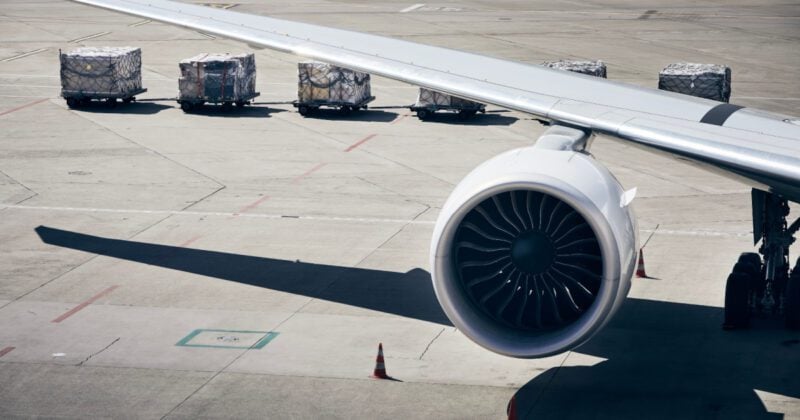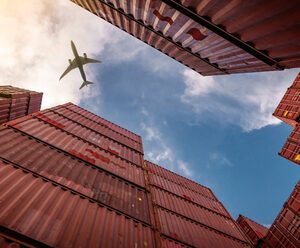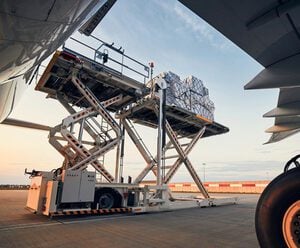
Expect more improvements in air freight toward second half of 2023

21 February was Pancake Day, which aptly describes the air cargo markets in late February as it was as flat as the proverbial pancake. Demand remains weak amidst rising capacity as more passenger and freighter aircraft took to the skies.
DHL’s February Airfreight State of the Industry reports that February volumes were “lower” than during February 2022, with no traditional demand surge post-Lunar New Year apparent and e-commerce shipments impacted by high inflation.
On the supply side, global capacity in February was 16 percent higher than a year earlier, with more capacity being added to Chinese long-haul passenger routes throughout the month. Additionally, softened cargo volumes against improved capacity has reduced load factors in all regions.
Freight rate continues softening trend
The impact of flat demand and rising capacity on freight rates was readily apparent, with pricing continuing downward.
TAC Index reported in mid-February that outbound Hong Kong routes were down 36 percent year-on-year, while Shanghai outbound rates were 35 percent lower over the same time frame. The lower quintiles in the price ranges continued to fall back to levels before Covid-19, indicating spot prices are still falling, and contracts being renegotiated at lower levels. Outbound routes out of key hubs in Europe saw similar year-on-year losses, such as Frankfurt and Heathrow at -36 percent and -33 percent respectively.
More positively for carriers, the continuing decline of rates was softened by jet fuel prices falling 16 percent in January, according to Platt’s data.
Although the drops in pricing year-on-year look severe, context is everything. “While comparisons on all lanes against the year-over-year comps may look precipitous, current air cargo rates are still at least 50 percent higher than pre-pandemic levels,” reported Bruce Chan, Director and Senior Research Analyst covering Global Logistics and Future Mobility at Stifel.
“The flip side to that coin is that there still could be room to the downside. How quickly we get back to those levels - and how much choppiness there is on the way down - is still up for grabs.”
Convergence on pre-pandemic levels
Kelvin Leung, CEO, DHL Global Forwarding Asia Pacific, also believes that the current market needs to be viewed through historical context. “What we’re really seeing is an air cargo market that is starting to resemble pre-pandemic norms,” he said.
“Now that ocean container rates are far lower than they were, cargo that can be shipped is being shipped. A lot of bottlenecks in logistics networks have also been removed, so there is less need for emergency shipments. And obviously, we also now have more capacity, making air options cheaper and easier to access for customers.”
“We’re expecting consumer demand to improve as the year progresses, which should give the market more dynamism in the second half of the year.”
The switch between air and ocean modes
Chan noted that before Covid-19 struck, air freight costs had generally hovered at around 10 times higher than ocean freight rates for a shipment of equivalent size. However, during the pandemic and subsequent supply chain congestion, that modal spread “narrowed to around 3-5x, making air relatively more attractive”.
“But that spread is now widening back to normal levels, which means that air cargo is also relatively less attractive, at least to the extent that its fungible with other modes,” added Chan.
The choice between air and ocean, for now, is still tied. But the months ahead could see a shift should the gap for rates between both modes increase. “Aggressive spot rates across most tradelanes will continue, but with the market likely to recover toward the second half of 2023, we should see an increase in long-term rates,” added Thomas Mack, Global Head of Air Freight, DHL Global Forwarding.
Challenges and positives for the months ahead
There are more challenges than simply resurgent competition from container shipping for cargo facing the global air cargo sector.
DHL’s February Airfreight State of the Industry notes that PMI Indexes indicate low export orders. Korea’s exports, which offer an early bellwether into the state of world trade, further deteriorated in the first 20 days of February.
“On a working day-adjusted basis, exports fell 14.9 percent year-on-year [in the period],” reported financial analyst firm Nomura. “China’s reopening has not yielded any benefits yet, with exports to China worsening to -32.7 percent year-on-year.”
“On the capacity front, as the world reopens and travelers resume normal operations, more lower deck belly space will come into the market,” said Thomas Mack, Global Head, Air Freight, DHL Global Forwarding.
Willie Walsh, IATA’s Director General, struck a cautious and balanced tone in his latest analysis. On the one hand, he said ongoing measures by key governments to fight inflation would see cargo volumes in 2023 undershoot 2019 levels by 5.6 percent.
On the other hand, he argued that these measures would take some time to bite into cargo rates. “So, the good news for air cargo is that average yields and total revenue for 2023 should remain well above what they were pre-pandemic,” he added. “That should provide some respite in what is likely to be a challenging trading environment in the year ahead.”
ALSO WORTH READING












 English
English